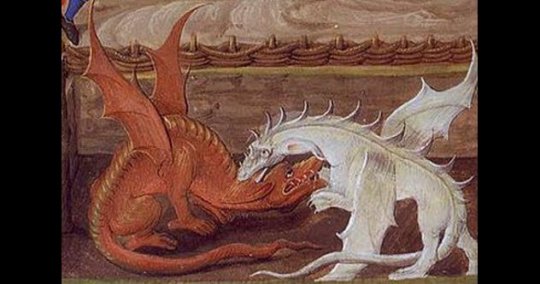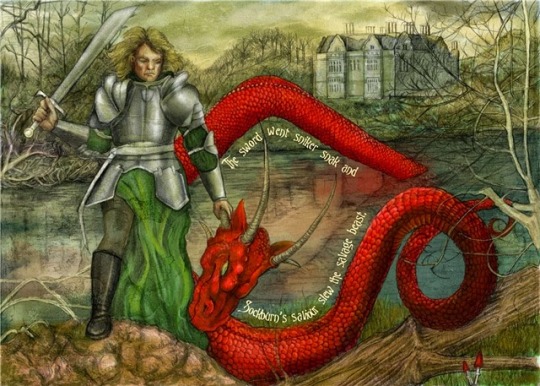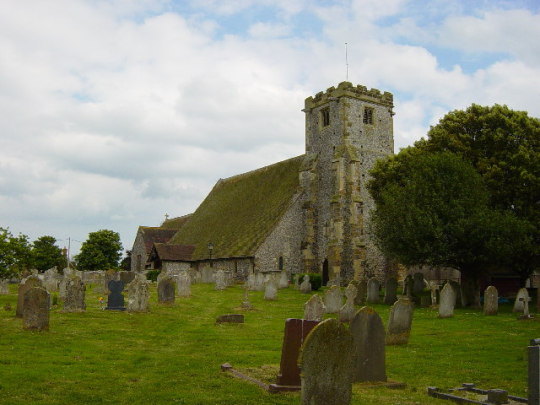#stonegravity
Text

KDSculpturesGallery: The Best Sculpture Artist Company in Germany
KDSculpturesGallery is a leading sculpture artist company in Germany that specializes in creating high-quality, custom-made sculptures for a variety of clients, including individuals, businesses, and organizations. The company's team of experienced and talented sculptors are experts in a variety of materials and techniques, and they are able to create sculptures of all sizes and styles, from traditional to contemporary.
KDSculpturesGallery is committed to providing its clients with the highest quality possible, and the company's sculptures are known for their beauty, craftsmanship, and durability. The company has a wide range of satisfied clients, and its work has been featured in a variety of publications and exhibitions.
Click here:- Best Sculpture artist company in Germany
Here are just a few of the things that make KDSculpturesGallery the best sculpture artist company in Germany:
Experienced and talented sculptors: KDSculpturesGallery's team of sculptors are experts in a variety of materials and techniques, and they are able to create sculptures of all sizes and styles.
Commitment to quality: KDSculpturesGallery is committed to providing its clients with the highest quality possible, and the company's sculptures are known for their beauty, craftsmanship, and durability.
Wide range of satisfied clients: KDSculpturesGallery has a wide range of satisfied clients, and its work has been featured in a variety of publications and exhibitions.
If you are looking for a sculpture artist company in Germany that can create a custom-made sculpture to meet your specific needs, then KDSculpturesGallery is the perfect choice. Visit the company's website today to learn more about its services and to view a portfolio of its work.
For more information visit here:
Address Kreuzstraße 10, 21502 Geesthacht, Germany
Phone +49 (0) 1521 3907 587
Email [email protected]
Website :- https://kdsculpturesgallery.com/
#stonesculptures#sculpture#art#stonesculpture#instagood#artofvisuals#landart#fineart#moodygrams#gravitystone#ishihana#stonegravity#lifestyle#mindfullness#pietreinequilibrio#stonebalancingart#gravityrock#ephemeralart#ephemere#rockbalancingart#earthart#ecoartist#createexplore#balanceart#andygoldsworthyinspired#ariokio#theimaged#zenphotography#rockbalancing#rockcairnspoetry
0 notes
Text

'Green Man resting' (2023)
A4 Canvas
Acrylic
🌳🍃🌿🍀👤
Based on a zine prompt I never got to complete in time, I was inspired by the folk figure of the Green man. Although most Green men only have their face depicted I decided to imagine his body as well.
I also had recently come across a photo of the stone graves of Heysham and so I decided to combine them both.
The Green Man is said to symbolise the cycle of life, death and rebirth.
For sale currently within the UK/Ireland. Please DM if interested.
#art #acrylicpainting #acrylicart #greenman #woodwose #artforsale #Traditionalart #painting #folkart #greenmen #thegreenman #pagan #natureart #thestonegravesofheysham #stonegrave #stonegravesofheysham
#art#traditional art#acrylpainting#art for sale#painting#folk art#folk aesthetic#green man#the green man#stonegrave#thestonegravesofheysham
0 notes
Text
The Remarriage of Widows
“Widows, as unmarried women in possession of land, were in many ways an anomaly within landholding society, whether this was only their life interest in dower and/or jointure from their late husband’s estates, or whether, in addition, they had their own inheritances. Like Lucy in 1312, they performed their own homage and fealty in respect of any lands that were held in chief, usually after giving an oath not to remarry without the king’s licence.
A significant quantity of landed wealth was at stake because most landholders left widows. Of 501 men who received a summons to parliament between 1301 and 1400, precisely two-thirds (333) left widows, although the length of time that these women survived the death of their first or only husband varied between a matter of weeks and fifty-nine years. The important question is how far widows were free to choose whether, and if so whom, they married again.
In theory, the only constraint on their choice was that the widows of tenants-in-chief were obliged to obtain the king’s consent to a remarriage; in practice, it was very different. In religious terms, widows may have been confused about what they ought to do because the church promulgated two contradictory views. On the one hand, there was some religious pressure against remarriage, a view that ‘hinted pointedly that remarriage signified shameless slavery to the voluptuous enticements of sexual passion’.
This occasionally resulted in the widow’s vow of chastity, although not necessarily after they were first widowed. Margaret Clifford took the vow on the death of her only husband Peter de Mauley (d.1355), but others after the deaths of their second or even third husbands. Moreover, a vow taken might not be respected, either by the vowess herself or by others. Some vowesses were abducted and forced into marriage, but Elizabeth of Juliers (d.1411) broke her vow made in 1352, after the death of her first husband John, earl of Kent, to marry Sir Eustace Dabridgecourt in 1360.
Some husbands attempted to reinforce this principle by specific terms in their wills, but not always successfully. On the other hand, there was an equally strong church view that a widow had a perfect right to remarry, and this was strongly reinforced by the secular world. The feudal assumption that widows would remarry was expressed in the right of the king to supervise the remarriage of the widows of tenants-in-chief and the pecuniary consequences of that. He was able to impose a fine for remarrying without licence or for licence to remarry whom she wished, or to grant the right to receive the fine to another.
He might also grant permission to a widow to remarry whom she liked without a fine, but there is no doubt that on occasion he might pressurise a widow to remarry for the benefit of friends and servants, in the same way as he used his rights over the marriage of minor heirs and heiresses. An explicit statement of the king’s expectations is found in the grant made in July 1347 to Margery, widow of Sir Maurice de Berkeley, ‘that she shall not be compelled to marry again’.
Sir Walter de Teye (d.1324) married the heiress Isabel de Stonegrave, widow of Simon de Pattishall (d.1295), ‘by command of ’ Edward I. Six weeks after the death of William Lord Martin in April 1326 his widow Margaret was married to Sir Robert de Wateville (d.1330); the king was present at the ceremony and Wateville had been promised a rich wife by his lord the younger Despenser.
Only slightly less precipitate was the marriage of Juliana de Leybourne, widow of John Lord Hastings who died shortly before 27 January 1325, to Sir Thomas Blount. In July 1325, ‘out of affection for’ Blount, Juliana had licence to marry him, ‘if she will’, thus preserving the illusion of free consent, although her dower was not assigned until 23 September, by which time she was married to him.
The widow’s own family might also be an important influence. A second marriage might be arranged by the bride’s father, as her first one had been. This was particularly the case when the girl was still young, but Eleanor, daughter of Sir John de Berkeley of Beverstone (d.1428) was at least twenty-eight when her first husband John de Arundel died in 1421 and her father arranged her second marriage in 1423 to Richard Poynings (d.1429).
William de Barford was closely involved in the second marriage of his daughter, Alice, probably against her will, to Stephen Worlyk. Sir Thomas de Grey of Cornard (Suff.) petitioned to be granted the king’s rights in the marriage of his daughter Amicia, widow of Thomas Fitz Eustace (d.1318). Although this was granted, she had licence to marry whom she would on 20 January 1319 but still granted both her jointure manors to her parents.
…While a widow might be pressurised into remarriage by the king or her own family, another possibility, altogether more brutal, was that she might be abducted and forced into another marriage by someone who was ‘more desirous of patrimony than of matrimony’. This was especially the case with widowed heiresses because this opened the possibility that their lands might be settled on the later husband and any children they might have.
Widows were more vulnerable than maidens to abduction because they were less heavily guarded, and more attractive because they carried the prospect of immediate possession of their jointure and dower lands by comparison with daughters who might be disinherited. Moreover, although their vulnerability was a matter of concern, they had less protection from the law than maidens.
The principle that a wife could not prosecute her husband ensured that women could not accuse their ravishers once coercive nuptials had been solemnised; this weakness was not addressed until the fifteenth century. There were probably more remarriages by force than are recorded because the woman acquiesced, however unwillingly. Victims were frequently raped following the ceremony in order both to consummate the marriage and to shame the victims into submitting.
It has been seen that forced marriages may lie behind a number of the divorces sought by wives, but many others did not take that step. Alice de Lacy endured her third marriage to Hugh Frene even though she was so desperate to evade it that, when Frene took her from Bolingbroke Castle, she deliberately fell off her horse, an action not taken lightly by a woman of fifty-four.
Frene’s abduction was carried out in violation of the vow of chastity Alice had made but it seems likely that such a vow might be undertaken as a protection, however ineffectual it might prove to be, against an unwanted subsequent marriage. A more practical expression of self-help, in the absence of effective legal protection, was displayed by Eleanor, daughter and heir of Richard Fraunceys and widow of John de Norwich who died abroad around Christmas 1373.
On 22 January 1374, she granted the lands of her inheritance to feoffees on condition that she should hold them while she remained unmarried, or if she married with the consent of the feoffees, but that if she was ravished, or married without the feoffees’ assent, they would keep the lands for her life, saving the remainder to her issue and her right heirs.
…A final factor was that a speedy remarriage might be advisable for a vulnerable widow because of practical or political circumstances. This may apply to the second marriage of Isabel de Berkeley (d.1362), widow of Robert Lord Clifford. On his death in 1344, Isabel held the greater part of the estate in jointure and dower and there was no adult heir, creating a potentially dangerous vacuum of leadership in the north.
Within thirteen months she had married again, without the king’s licence, to Sir Thomas de Musgrave, who came from a well-established local family and had been Clifford’s chief retainer, acting as his deputy sheriff of Westmorland and as a feoffee.
In rather different circumstances, Eleanor Beauchamp, widow of Thomas Lord Roos (d.1430) and of Edmund Beaufort, duke of Somerset (d.1455), married thirdly the obscure Walter Rokesley within months of the forfeiture of her property because of the rebellion of her son. ‘By marrying down she had protected herself from political retribution’ because her humble third husband ‘did not have the standing to make political use of Somerset’s lands’.
…Between all these potential controlling factors, it seems likely that many widows who remarried did so, with a greater or lesser degree of reluctance, against their personal wishes. The actual statistics show that, of the 308 widows of men summoned to parliament in the fourteenth century, slightly over half (167) did not marry again.
They had ‘deliberately rejected the option of remarriage; practical and business-minded suitors, if not lovesick swains, were now sent packing’. As it can be assumed that there were many more widows who remarried under pressure than widows who wanted to remarry but found no takers, it seems likely that the personal preference of most widows was to remain independent.
Nevertheless, among the 141 widows who remarried at least once, there were certainly some who chose to do so, either because they preferred the married state or because they wanted to marry someone in particular. Some may simply have preferred to be married and be free of the primary responsibility of managing estates, with all its complications, as well as free of the threat of being remarried against their will.
For others, personal affection may have been the principal factor and this is often thought to have been the case when a second or later husband was notably inferior in social rank. This will be discussed more fully later but, in the meantime, there is no doubt that widows might remarry because of their personal feelings, even if the later husband was not necessarily a social inferior.”
- Bridget Wells-Furby, Aristocratic Marriage, Adultery and Divorce in the Fourteenth Century: The Life of Lucy de Thweng (1279-1347)
48 notes
·
View notes
Text
282) The Master of Stonegrave Hall – Helen Dickson (M&B Historical)
Few defy Lord the Seventh Doctor and come away unscathed...
Nyssa of Traken has grown up in the long, dark shadows cast by Stonegrave Hall. Yet when the Master takes her sick mother into his care she must finally confront the man whose presence is as brooding as his windswept Yorkshire lands. Men quake at Lord Seven's mere command, yet this slip of a girl defies him at every turn! His fury at her is matched only by his desire, and Nyssa’s pure innocence burns brightly in the darkness of the Hall. But the light threatens to lay bare secrets that could ruin them both.
The Keeper of Traken with Seven and enough gothic atmosphere to stand his spoons upright in.
6 notes
·
View notes
Text
HEY FUCKING WHAT LOREHEADS‼‼ i just had a smoldering butterfly drop off a skeleton enemy in the stonegrave fissure.... anyone have any ideas!? i'm under the opinion that the ships/stone coffins held numen potentially, and putrecense seems similar to the living jar situations.... so.... if the smoldering butterfly is basically confirmed to be melina atp, does it have something to do with GEQ/or her being a descended from a numen!? could it have something to do with her physical body!? or something else!?
0 notes
Photo

Herbert Edward Read, conocido como Herbert Read, (Vida y obra)
Tal día como el 4 de diciembre de hace 139 años nació Herbert Edward Read, conocido como Herbert Read, (1893-1968). Nació el 4 de diciembre de 1893 en Kirkbymoorside, Yorkshire del Norte, Ryedale, Inglaterra, (Reino Unido) y murió el 12 de junio de 1968 en Stonegrave, Yorkshire del Norte, Ryedale, Inglaterra, (Reino Unido). Fue un pensador inglés, filósofo político, poeta, novelista, anarquista y critico de literatura y arte.
0 notes
Photo

河原で #石花 #川遊び #石積み #石積みアート #石を積む #積み石 #balance #ロックバランシング #ロックバランス #ストーンバランス #ストーンバランシング #バランシングストーン #石オブジェ #石アート #ishihana #stoneflower #ephemeralart #stonegravity #stonebalance #stonebalancing #balancestone #rockbalance #rockbalancing #rockcairnspoetry #equilibrioderocas #rockbalanceart #rockstacking #stonestack #stonestacking #rockstack https://www.instagram.com/p/CfIL2SThLvB/?igshid=NGJjMDIxMWI=
#石花#川遊び#石積み#石積みアート#石を積む#積み石#balance#ロックバランシング#ロックバランス#ストーンバランス#ストーンバランシング#バランシングストーン#石オブジェ#石アート#ishihana#stoneflower#ephemeralart#stonegravity#stonebalance#stonebalancing#balancestone#rockbalance#rockbalancing#rockcairnspoetry#equilibrioderocas#rockbalanceart#rockstacking#stonestack#stonestacking#rockstack
4 notes
·
View notes
Photo

Múltiples son los artistas que han tomado inspiración o su obra va de la naturaleza y la relación simbiótica que los seres humanos tenemos con ella. Tomo como pretexto este día del medio ambiente para reeditar una exposición que gira alrededor de este tema. Glenda Salazar, tiene desde sus inicios como artista una relación especial con la naturaleza, y así lo demuestra en su obra, relación esta que refleja en muchas de las manifestaciones que domina, dibujo, fotografía, performance y body art. En “Lo que no te mata te fortalece” la naturaleza es sujeto y objeto de la acción artística. Las fotografías de Glenda de la serie homónima a la exposición, donde las flores son intervenidas con troquelado de palabras con un marcado impacto para la artista, me provocan sentimientos encontrados. Los conceptos que se exponen, llamados de acción al espectador: “persevera”, “crece”, “ríe”, “vive”, toman como soporte algo tan efímero como es una flor… cuando deberían estar grabados en piedra por la fuerza e influencia de los mismos en el día a día. Sencillamente la artista escogió ese material para reforzar sus significados. Pero entonces, ¿el hecho artístico son el troquelado de las flores o el proceso creativo que dio origen a las fotografías? Otras de las peculiaridades de esta exposición es la participación del público en la creación de la obra, Glenda cede espacio y los asistentes encuentran en los alrededores de la galería piedras talladas. Como reproduciendo esa convocatoria lanzada meses antes a que los amigos, conocidos y admiradores compartieran en las redes fotografías junto a piedras encontradas y su ubicación en mapas. El arte deja de ser meramente contemplativo para hacer se participativo, una experiencia empírica de aquellos asistentes que nutren y dinamizan la exposición. . . . . . #landart #art #nature #stonebalancing #rockbalancing #ephemeralart #stonebalance #landscape #contemporaryart #rockbalance #zen #stoneart #natureart #sculpture #photography #stonegravity #landartist #meditation #stonebalancingart #gravityrock #gravitystone #gravityglue #ephemere #artwork #internationalrockstacking #artist #rockstacking #rockbalancingart #stones (en Galería ARTIS 718) https://www.instagram.com/p/CBEg6FoBHwd/?igshid=1rfk6bvm8fbb6
#landart#art#nature#stonebalancing#rockbalancing#ephemeralart#stonebalance#landscape#contemporaryart#rockbalance#zen#stoneart#natureart#sculpture#photography#stonegravity#landartist#meditation#stonebalancingart#gravityrock#gravitystone#gravityglue#ephemere#artwork#internationalrockstacking#artist#rockstacking#rockbalancingart#stones
1 note
·
View note
Text



susie does not care
(inspired by this reddit post :D)
#stonegrave??? /j#my art#deltarune#kris#susie#berdly#noelle#gummy worms are made of bones 🤔#NO NO NO I JUST REALIZED I MESSED UP SUSIE'S WORMS ASFDGSGLK
5 notes
·
View notes
Photo

#valleyofthekings #ramsesthegreat #ramsesthefirst #talderkönige #stonegraves #rockgraves #ramses #luxor #egypt #history #traveladvice go to Luxor in winter. In winter they have only 28 degrees at daytime. But it’s feels very hot 🥵 cause the air is so dry. And it’s hot in the graves too. (hier: Valley Of The Kings) https://www.instagram.com/p/CWpnmFYMPlt/?utm_medium=tumblr
#valleyofthekings#ramsesthegreat#ramsesthefirst#talderkönige#stonegraves#rockgraves#ramses#luxor#egypt#history#traveladvice
0 notes
Photo

Такий собі станець пісковику Сарматського моря третинного періоду на берегу Молочної ріки: 1.6га, 12м, 3 тис плит з довгою історію утворення, та декілька тисяч унікальних стародавніх наскельних петрогліфів дошумерським періода, що датуються чи то палеолітом, чи то неолітом. А валяється все це добро під небом серед степу та потроху стирається з лиця землі. #кам'янамогила #stonegrave.org (Національний історико-археологічний заповідник "Кам'яна Могила") https://www.instagram.com/p/CGLMvK7g9ay/?igshid=1oev80nesfzn5
0 notes
Photo

İmbriogion ________________________________________ 🎬 | Konu : "İmbriogion" 📷 | Sony Alfa a6000 - 18/105 G 📐 | F7.1 , İso:250, 1/600 🌍 | Demircili Kaya Mezarları | Mersin 🕒 | 30.06.2017 / 10:00 ________________________________________ #fotogulumse #igmood #albumdenyansiyanlar #ig_eurasia #ig_photostars #gununkaresi #kadraj_ici #turkobjektif #turkportal #igworldclub #istanbulda1yer #photofday #ig_dynamic #objektifimden #ig_fotografdiyari #igersmood #zamanidurdur #turkishfollowers #anlatistanbul #fotografkatibi #igglobalclub #sonyalpha #alfakulup #sonyturkiye #sonyalphatr #stonegrave #demircili #mersin #korkykos #olba _________________________________________ "Bir eserin umuma arz edilip/edilmemesini münhasıran eser sahibi tayin eder." ________________________________________ (Uzuncaburç)
#turkobjektif#demircili#objektifimden#istanbulda1yer#sonyalpha#sonyalphatr#korkykos#ig_fotografdiyari#sonyturkiye#igmood#igworldclub#photofday#gununkaresi#stonegrave#olba#fotogulumse#igersmood#ig_photostars#ig_dynamic#igglobalclub#alfakulup#albumdenyansiyanlar#ig_eurasia#turkishfollowers#mersin#kadraj_ici#anlatistanbul#fotografkatibi#zamanidurdur#turkportal
1 note
·
View note
Text
Cool! Thank you😊❤️❤️❤️❤️❤️
Dragons from British folklore

The red and white dragons

The image of the dragon is an integral part of Welsh identity. As evidence of this, a red dragon is emblazoned on the country’s flag as a symbol of Welsh pride and nationalism.

This dragon, along with a white dragon, appear in The Mabinogion—one of the earliest examples of British prose literature and an important collection of Welsh mythology.

Compiled sometime between the 12th and 13th centuries, the Mabinogion contains numerous tales that have become famous across the world, such as some of the earliest accounts of the Celtic leader King Arthur. “Lludd and Llefelys,” another famous tale, details the important war between the red dragon and the invading white dragon.

In the story, the foreign white dragon is so fearsome that its cries cause women to miscarry and its mere presence is enough to kill livestock and ruin crops. Determined to rid his kingdom of this menace, King Lludd of Britain visits his brother Llefelys in France. Llefelys tells his brother to prepare a pit filled with mead and cover it with cloth. After Lludd completes this task, the white dragon begins to drink from the pit and falls into a drunken stupor. With the monster asleep, Lludd captures the dragon and imprisons it in Dinas Emrys, a wooden hillock in Wales.
One of the more common interpretations of this story is that the red dragon represents the native Celtic inhabitants of Britain while the white dragon is a symbol of the Germanic Anglo-Saxons who began invading England in the fifth century. A related idea is that the white dragon is the symbol of the Saxon warlord Vortigern while the red dragon is the flag of King Arthur’s forces. Either way, “Lludd and Llefelys” does show a close relationship between Celtic Britain and Gaul (today’s France), which may make this story’s origins even older than the fifth century.
Dragon of Loschy Hill

“The Dragon of Loschy Hill” is a tragic Yorkshire tale that is recounted by Reverend Thomas Parkinson in his 1888 book Yorkshire Legends and Traditions. According to Parkinson’s account, a large dragon once haunted a wooded area later known as Loschy’s Hill in the parish of Stonegrave. As the dragon terrified local villagers, a brave knight named Peter Loschy decided to kill the beast once and for all. While wearing a special suit of armor that featured several razor blades, Loschy and a trusted dog set out to find the dragon.

Feeling confident that the knight would be just another meal, the dragon wrapped itself around Loschy’s armor and tried to squeeze the human into eternal submission. Loschy’s armor gave the dragon numerous cuts, but all of them healed quickly. Although stunned by the dragon’s supernatural powers, Loschy managed to cut off pieces of the dragon’s skin with his sword. His dog then carried the pieces to Nunnington Church. Loschy and his dog managed to dismember the dragon so thoroughly that it could not regenerate. Loschy was so overjoyed that he didn’t realise that his face was coated in the dragon’s poison. Upon licking his master’s face, the faithful dog ingested the poison and died. In turn, the poison fumes became too much for Loschy, and he died by his dog’s side.

As a show of gratitude, the villagers of Stonegrave buried Loschy next his dog in Nunnington Church, where stone engravings retell the story for all to see.
Sockburn worm

The Sockburn worm is a wyvern, not a dragon. Although a relative of the dragon, northern European folklore depicts wyverns as smaller creatures with the head of a dragon, the body of a snake, the wings of a bat, and two legs that protrude above a long, serpentlike tail. Despite being smaller than dragons, wyverns were known for being exceptionally vicious. The Sockburn worm was no different.

Not long after the Norman Conquest, the Sockburn worm began terrorising the country surrounding the River Tees in County Durham. The Sockburn worm used its ability to fly and its poisonous breath to wreak havoc all across the Sockburn Peninsula. Realising that the wyvern must be killed to save the realm, a knight named Sir John Conyers visited a church and offered up the life of his only son to God in preparation for the battle. A document known as the Bowes Manuscript asserts that Conyers not only killed the wyvern but earned land and a title because of his heroism.
Some historians have suggested that the Sockburn worm represents a marauding Danish warrior while others see Conyers as a Norman knight who helped to legitimize Anglo-French rule in the northeast.

Whatever the truth, the weapon that Conyers supposedly used to kill the Sockburn worm is still on display in the Durham Cathedral and is called the Conyers falchion.
Mester Stoor worm

Located in the far north of Scotland, the Orkney Islands have an ancient history that stretches all the way back to the Stone Age. During the ninth century, Orkney fell prey to numerous Viking raids from Norway. Ultimately, the islands were settled by Scandinavians who helped to annex the islands for Norwegian and later Dano-Norwegian kings. As the Orkneys offered a way for Germanic and Celtic cultures to interact, the islands became home to unique folklore. As part of that folklore, the Mester stoor worm remains a thoroughly Orcadian tale.

As the legend goes, the Mester stoor worm was a gigantic sea serpent that could wrap itself around the entire world. When it moved, the Mester stoor worm caused earthquakes and other natural disasters. Owing to the monster’s poisonous breath and its habit of smashing ships to pieces, most knights steered clear of the creature. One day, a powerful wizard promised the king that the sea beast could be killed if the king gave up his daughter to the wizard. Not wanting to lose his daughter, the king offered the entire kingdom to any brave warrior who killed the Mester stoor worm.
An unlikely hero emerged by the name of Assipattle, a slow-witted farm boy who killed the dragon by guiding a ship into the dragon’s stomach. There, Assipattle applied burning peat to the dragon’s liver, which eventually caused an explosion that forever rid the world of the Mester stoor worm. According to the legend, the dead beast did bring about a positive change, for the dragon’s scattered teeth created the Orkney Islands.
Bignor Hill dragon

Not much is known about the Bignor Hill dragon. Its name appears only sporadically in the historical record, yet the few clues about the beast are quite tantalizing. In the 19th century, The Gentleman’s Magazine recorded that the local inhabitants of Bignor Hill, an area in Sussex dotted with Roman roads, believed that an ancient Celtic dragon lived on top of a nearby hill.

Some folktales spoke of the surrounding hills as being part of the dragon’s skinfolds while others pointed out that the dragon’s den was close to a ruined Roman villa. This later tale is interesting because it may highlight an interpretation of the Bignor Hill dragon as some sort of holdout from the Roman occupation of Britain, which introduced the Roman religion on the island. The notion that the dragon is of Celtic origin likewise points to a Christian demonetisation of pagan practices. Although the origins of the Bignor Hill dragon are unknown, Sussex is awash in dragon tales, making it a treasure trove of dragon folklore.
Lyminster knucker

Lyminster, Sussex, was once home to a knucker. Based on the Old English word nicor, which means “water dragon,” knuckers are predominately found in knuckerholes, ponds that are present throughout Sussex. The Lyminster knucker lived in one such knuckerhole near the major church of Lyminster. The knucker began its reign of terror by snatching away livestock. Then the water dragon began dragging away all the young girls from the village until the only maiden left was the king’s daughter. With few options left, the king of Sussex offered his daughter as the prize for anyone who could slay the dragon.

Three different versions of the legend record three different heroes. One legend has it that a wandering knight killed the dragon before taking the princess as his wife. In another version, a local man named Jim Puttock kills the dragon by feeding it poisoned pudding. A third version says that a man named Jim Pulk slays the dragon with poisoned pudding but forgets to wash the dragon’s poison off his skin and dies as a result.

These competing versions merely highlight the importance of the Lyminster knucker story to Sussex folklore. St. Mary Magdalene’s Church in Lyminster is still known as the home of the “Slayer’s Slab“—a tomb that supposedly houses the bones of the man who killed the Lyminster knucker.
Laidly worm of Spindleston Heugh

“The Laidly Worm of Spindleston Heugh” began as a Northumbrian ballad that was passed down through song in northern England. The story begins with the king of Northumbria, who lived inside Bamburgh Castle with his wife and children. When the first queen died, the king took a malicious witch as his bride. The king’s strong son, Childe Wynd, is out to sea, so there is no one in the castle who can stop the witch’s evil plans. Jealous of the beautiful Princess Margaret, the witch turns the young girl into a dragon. The princess remains that way until Childe Wynd returns and kisses the dragon. The prince’s kiss breaks the spell, which allows the prince to claim the throne. As revenge, Childe Wynde curses the witch and turns her into a toad.

This is just one version of this classic tale. In another version, the castle is called Bamborough and the witch’s curse is far worse.

Princess Margaret becomes an uncontrollably hungry dragon that must feast upon the area livestock. However, both versions draw inspiration from the Icelandic saga of the shape-shifter Alsol and her lover Hjalmter.
The Mordiford wyvern

The story of Maud and the Mordiford wyvern is a rather unusual legend. Set in the Herefordshire village of Mordiford, the story concerns a young girl named Maud who finds a baby wyvern while out walking one morning. Maud takes the small creature back to her home as a pet and feeds it milk regularly.

As the creature grows older, it develops a taste for human flesh and begins dining on the Mordiford villagers. Despite its cruelty, the wyvern remains loyal to Maud and refuses to eat her. However, even Maud cannot get the wyvern to stop its killing spree. It makes its home on a nearby ridge and its constant movements back and forth create the Serpent Path, a twisting road that ends at a local river. Several versions of the creature’s demise exist. In one, the scion of the Garston family manages to kill the beast after a fierce ambush. Another version says that a condemned criminal killed the wyvern to escape capital punishment.
The Dragon of Longwitton

For a time, the inhabitants of Longwitton, Northumberland, were barred from three holy wells. This was not because the water was poisoned but rather because a fearsome dragon kept them away. A hero did not appear until a knight named Sir Guy, Earl of Warwick accepted the task of killing the dragon. For three days, Sir Guy and the dragon fought each other. During that time, Sir Guy grew disenchanted because each cut and stab did nothing to the dragon. Once struck, the dragon simply used magic to heal its own wounds.

On the third day, Sir Guy noticed that the dragon kept its tail inside one of the wells throughout the battle. Realising that the sacred waters allowed the dragon to constantly heal itself, Sir Guy persuaded the dragon to move away from the wells entirely, thereby leaving it vulnerable. Once away from the holy waters, Sir Guy easily managed to kill the creature.
More detailed versions of the story proclaim that the waters were known for their healing properties throughout Northumbria, and as such, the dragon coveted the wells for its own purposes. In some tales, the brave knight also uses a magic ointment to protect himself from the dragon’s breath.
Worm of Linton

According to 12th-century stories from the Scottish Borders, the Linton worm lived in the “Worm’s Den”—a hill near the village of Linton in Roxburghshire. At dusk and dawn, the dragon left its den to prey upon sheep, cows, and people. All the weapons used against the creature proved useless, and before long, Linton had been reduced to a wasteland.
When word of the dragon reached the ears of William (or John) de Somerville, the Laird of Lariston, the courageous knight decided to act. Riding north, de Somerville noticed that the dragon frequently consumed everything that stood in its way. However, when faced with something too large to swallow, the dragon would lie still with its mouth open. Realising that this made the dragon vulnerable, de Somerville had a blacksmith create an iron spear with a wheel on its tip. De Somerville placed burning peat on top of the wheel. When he journeyed inside the worm’s mouth on horseback, he placed the fire inside of the dragon, creating a fatal wound.

In its death throes, the Linton worm’s thrashing body created the many hills that today populate the region. For his actions, Linton Church (or Kirk) created a carved stone to record the story for posterity.
In some versions, the death of the Linton worm occurred during the reign of King William the Lion,

who ruled Scotland from 1143 until 1214. Supposedly, King William greeted de Somerville as “my gallant Saint George” to enhance the nobleman’s confidence. Also, besides the carved stone in Linton Church, de Somerville’s victory is supposedly commemorated by the de Somerville coat of arms, which features a green, fire-breathing dragon on top of the tympanum.
90 notes
·
View notes
Photo

"when you see it, you can do it". Sculptures. I want it to be ephemeral, like autumn leaves falling out of the tree inevitably. Je veux que ce soit éphémère, comme les feuilles d'automne qui tombent de l'arbre inéluctablement. Fleurs de pierres. 石の花. Wasi-sabi. Ikigai. Ishi no hana. It's not easy, it's balance, peace and love. It's stone balance, rock balance. Rocksculpture. Stonesculpture. Theimaged. Moodygrams. Createexplore. Artofvisuals. Practice. Naturephotography. Nature_perfection. Meditation, zen, art éphémère, minimaliste, équilibre instable, calme, sérénité. Yoga mental. Focus, concentration. Instagood. Mindfullness. La planète terre est une immense galerie d'art, ouvrez les yeux, votre cerveau est un musée. Planet Earth is a huge art gallery, open your eyes, your brain is a museum. #balanceart #ecoartist #earthart #ephemeralart #ephemere #fineart #gravityrock #gravitystone #gravityglue #instagood #igersstetienne #ishihana #landart #meditation #mindfullness #mindfulliving #rockbalance #rockbalancing #rockbalancingart #shinrinyoku #stonebalancing #stonebalancingart #stonegravity #suiseki #shinrinyoku #zen #zenphotography https://www.instagram.com/p/B8BWk7dIQZI/?igshid=1k7jh7ucue54o
#balanceart#ecoartist#earthart#ephemeralart#ephemere#fineart#gravityrock#gravitystone#gravityglue#instagood#igersstetienne#ishihana#landart#meditation#mindfullness#mindfulliving#rockbalance#rockbalancing#rockbalancingart#shinrinyoku#stonebalancing#stonebalancingart#stonegravity#suiseki#zen#zenphotography
1 note
·
View note
Photo

トリプル石鳥サン! #石花 #石遊び #宅積み #石遊び大好き #石ころ #川石 #石立て #石積み #積み石 #石積み上げ #ロックバランシング初心者 #ロックバランシング #ストーンバランシング #バランシングストーン #石オブジェ #石アート #ishihana #stonegravity #stonebalancing #rockbalancing #equilibrioderocas #rockstacking #stonestacking #piladepiedra #stonefun #stones #自然 #nature #naturaleza #naturelovers https://www.instagram.com/p/CGSv8CpFX52/?igshid=pyq6gwkaqyti
#石花#石遊び#宅積み#石遊び大好き#石ころ#川石#石立て#石積み#積み石#石積み上げ#ロックバランシング初心者#ロックバランシング#ストーンバランシング#バランシングストーン#石オブジェ#石アート#ishihana#stonegravity#stonebalancing#rockbalancing#equilibrioderocas#rockstacking#stonestacking#piladepiedra#stonefun#stones#自然#nature#naturaleza#naturelovers
2 notes
·
View notes
Photo

Herbert Edward Read, conocido como Herbert Read, (Vida y obra)
Tal día como 12 de junio de nace 54 años murió Herbert Edward Read, conocido como Herbert Read. Nació el 4-12-1893 en Kirkbymoorside, Yorkshire del Norte, Ryedale, Inglaterra, (Reino Unido) y murió el 12-6-1968 en Stonegrave, Yorkshire del Norte, Ryedale, Inglaterra, (Reino Unido). Fue un pensador inglés, filósofo político, poeta, novelista, anarquista y critico de literatura y arte.
0 notes